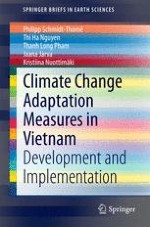This book describes the iterative steps that were successfully undertaken to develop adaptation measures to climate change in two Vietnamese provinces. The methodology used to develop the scientific basis and the societal agreement of the need to adapt to climate change is applicable also to other regions in Vietnam, Asia and worldwide.
The uncertainties of climate change models make it difficult to justify investments to finance protection from uncertain impacts. Setting out with the projected climate change impacts in Vietnam, which is one of the most vulnerable countries to climate change, the book describes a methodological approach to assess and evaluate local vulnerabilities of natural resources to climate change and socio-economic impacts, engaging local stakeholders in the development of locally acceptable and economically feasible adaptation measures. The methodological approach to understand the vulnerabilities and to develop climate change adaptation measures was scenario workshops that supported the communication between scientists and stakeholders.
The development of climate change adaptation strategies is nearly state-of-the-art in many countries, but often there is still a large step towards implementing climate change adaptation measures on the local level. The challenge in the development of adaptation measures lies in their acceptability by local stakeholders and decision makers. Climate change adaptation measures also usually demand investments. To understand potential future risks the communication methodology was to first get a good understanding of the natural resources (mainly surface and groundwater) and their potential vulnerabilities (current and future). This was followed by developing a common understanding of current risk patterns, as well as underlying vulnerabilities and hazards. Socio-economic developments have an equally strong, and in the short term mostly even stronger, impact on the living environment and natural resources as long-term climate change impacts. The scenario workshops developed a holistic approach on current and potential future risk patterns, with a special focus on surface and groundwater quantities and qualities, natural hazards and sea level rise. Land-use planning was identified as playing a decisive role in minimizing current and future risks. Finally, first adaptation measures for two Vietnamese provinces were developed and shall be implemented over the next years. The methodology that led to these adaptation measures shall be applied in other Vietnamese provinces.
